by Tim Hanley
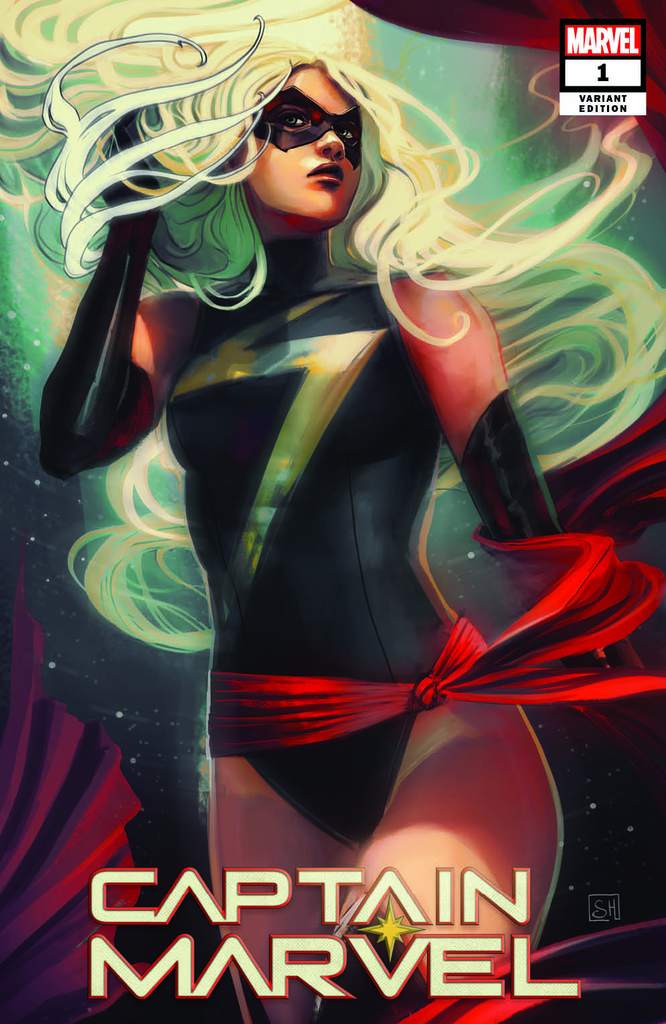
This growth has been reflected behind the scenes with a rise in female creators. The Fiona Staples-drawn Saga is a perpetual bestseller; Noelle Stevenson’s Nimona was nominated for a slew of awards; and a long list of women have contributed to the young readers smash hit Lumberjanes. Plus, Raina Telgemeier is far and away the biggest name in the comic book industry right now. Women are making comics in higher numbers than we’ve ever seen before.
Just not at traditional superhero publishers.
DC and Marvel have never been great at hiring women. While many female creators have done spectacular work for them over the decades, they were always a small minority. And that remains the case today, despite the massive influx of female talent across the industry. I’ve been tabulating creator statistics for DC and Marvel for several years, and when I started in 2011 their overall percentage of female creators hovered around 10%. These days, it’s in the ballpark of 16-17%. Higher, certainly, but still so very few, and nowhere near proportional to the growth in female creators we’ve seen elsewhere.
That statistics project is now continuing here at The Beat. After this dive into the second half of 2018, we’ll be looking at DC and Marvel’s creator ranks by gender on a quarterly basis, tracking areas of growth and decline to see how the superhero genre is evolving behind the scenes. Also, in these dark days of ComicsGate and all of the hate and harassment therein, let me clearly state that this column is wholly in favor of improved diversity and representation in superhero comics. A rise in female creators is always a good thing. And while gender is the focus here, that holds true for ethnicity, sexuality, and more. So let’s get rolling with some numbers!
DC COMICS
First, a quick explanation of how the stats are tabulated. We go through each publisher’s output of single issues, looking at eight categories: cover artists, writers, pencils, inks, colors, letters, editors, and assistant editors. Anyone credited in any of these categories gets counted by gender, and all of the numbers from each issue are then added together to give us the overall monthly total. This is not a count of how many different creators there are, but of the combined credits for all of the issues. For example, if Kelly Thompson writes five books a month, she gets counted five times, not just once. These numbers get charted up, and here we are.
So, from July through December 2018, DC Comics released 391 new comic books featuring 3476 creators: 2877 male, 597 female, and 2 non-binary. Here are their stats for the second half of the year:
DC’s overall percentage of female creators was 17.2%, a relatively decent total for the publisher and nearly a full percentage point higher than their spring total. Also, the non-binary numbers were so low that they don’t really register on the charts, but non-binary creators accounted for 0.06% overall, as well as 0.4% of writers.
By category, we’ve got a fairly standard run of numbers for DC. The first four categories tend to hover around 10% female creators, with writers ticking a bit higher and interior artists a bit lower. A year ago, female pencillers and inkers were in the low teens at DC, but they’ve been languishing in single digits lately. Female colorists were up a few points from the spring, with female letterers down a couple, and editorial remaining steady as it has all year.
As the chart above shows, editorial can carry a lot of weight with the overall total, with both categories posting numbers far higher than the creative side of the chart. Interestingly, strong numbers for female editors rarely result in big numbers for female freelancers at either publisher. This speaks not only to the outdated, entrenched nature of the Big Two’s hiring practices but also, more significantly, most of the power at DC and Marvel still rests with men. The majority of group editors at both publishers are male, as are the publishing heads of each with Dan DiDio and Jim Lee at DC and C.B. Cebulski at Marvel.
Breaking things down by month, we’ve got a tale of two seasons:
For the overall totals, the summer was up and down while the fall saw small, steady gains. These gains were bolstered by higher numbers for female cover artists, writers, and colorists. Pencillers and inkers didn’t change a whole lot over this six month span, but the fall did bring a noticeable drop for letterers and a dip for both editorial categories. Ultimately, the increases held more sway and pushed DC up bit by bit over the past three months. The relaunch of Vertigo in the fall may have helped this rise, with many female creators working across the new line.
The Past 18 Months at DC: After a bit of rocky summer, the fall has lifted DC up to their highest overall percentage of female creators in some time:
Although September saw one of the lowest totals for DC over the past 18 months, the November and December totals were the two highest in this span. This puts DC in a good position heading into the New Year, and it will be interesting to see if they can maintain this upward trajectory.
MARVEL COMICS
You never really know what you’re going to get with Marvel. DC is often the steadier, more predictable publisher, while Marvel is a mystery every month. And over the past six months, they put out 486 new comics with 4781 credited creators: 4002 male, 777 female, and 2 non-binary. Let’s dig into the numbers:
Given the year Marvel’s had, 16.3% female creators overall is a definite improvement for the publisher. As we’ll see shortly, the first half of the year was rough, but they’ve bounced back. The non-binary numbers come in even lower than DC’s, though, accounting for 0.04% overall and 0.33% of writers.
By category, the latter half of the year marked gains almost straight across the board for Marvel. Female cover artists were up a few percentage points from the spring; writers rose even more; and interior artists increased. Yes, 6% is an embarrassingly low number, but they were 3% in the spring, so progress? Female colorists were marginally higher as well, while female letterers remained non-existent (there have been two at Marvel in the eight years I’ve been doing these stats). And editorial is as lopsided as ever. Female assistant editors are quite numerous at Marvel, but full editors are rare. Although the totals for both categories rose slightly since the spring, the gulf between the two actually grew wider.
Month to month, we’ve got some categories moving in very different directions:
After a steady summer overall, Marvel peaked in September and began to slide a bit. Cover artists did the same, which makes sense. Given the massive number of variant covers Marvel puts out each month, it’s a category with a lot of sway on the overall total. Female writers seem to be moving in a positive direction, as do colorists and assistant editors, but full editors dropped into single digits in November and December, which is just paltry. The publisher isn’t exactly heading into the New Year with a full head of steam when it comes to female creator representation.
The Past 18 Months at Marvel: Ups and downs are a familiar scene at Marvel, as this roller coaster shows:
An uncharacteristically stable summer gave way to a new downward swing in the fall but, as the chart demonstrates, chances are they’ll be back up again. Marvel started the year in the middle of a four month skid, landing at the lowest monthly total they’d posted in ages last March. But they’ve crawled out of it, and while they remain noticeably below their recent highs, it’s better than it was.
“Better” is a word I’ll use a lot in this column. Also things like “relatively solid” or “decent” or “okay.” Rarely “good,” and probably never “excellent” unless something miraculous happens. The fact of the matter is, the numbers for female creators at DC and Marvel are improving. Painfully slowly and with regular setbacks, but still, the long-term trajectory is upward. However, as much as that’s true, this is a world where women account for only 6-8% of interior artists, where men dominate almost every category, and where the overall total percentage of female creators never gets out of the teens. Things are getting better, but they’re not good. Maybe someday, but not yet. We’re keeping an eye on things, though.
Tim Hanley is a comic book historian and the author of Wonder Woman Unbound, Investigating Lois Lane, and The Many Lives of Catwoman. You can visit Tim at Straitened Circumstances, follow him on Twitter @timhanley01, and see all of the former stats here.



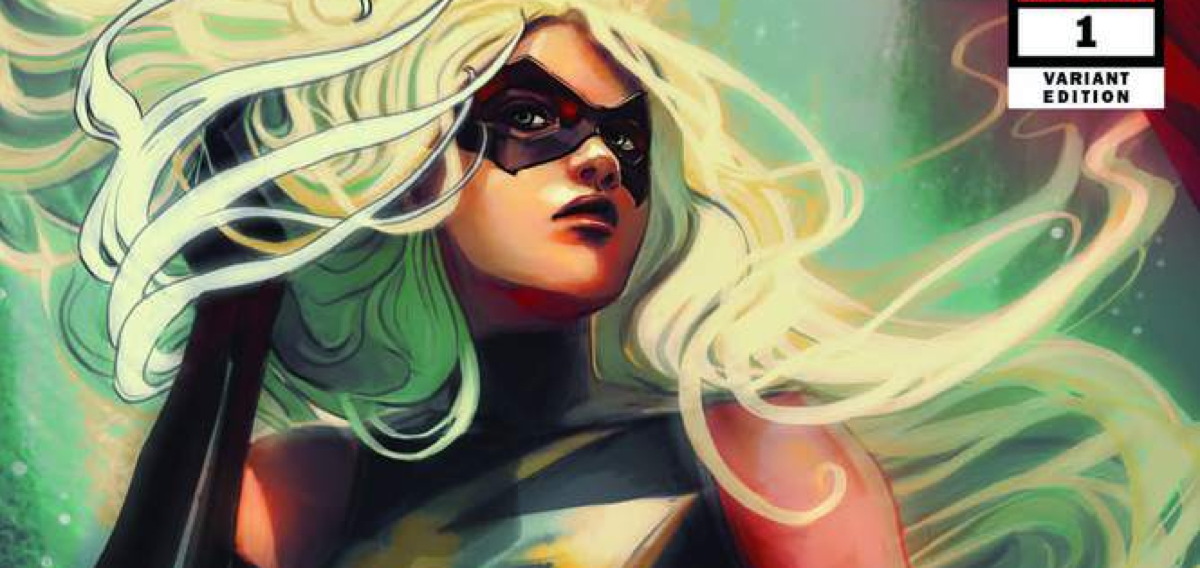
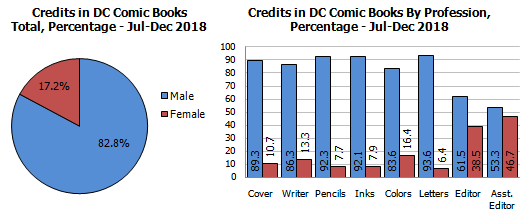
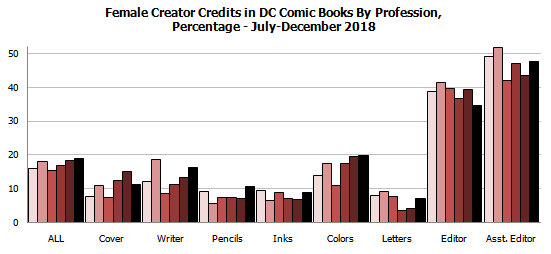
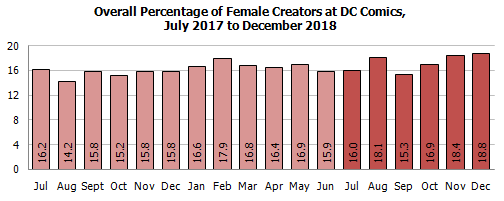
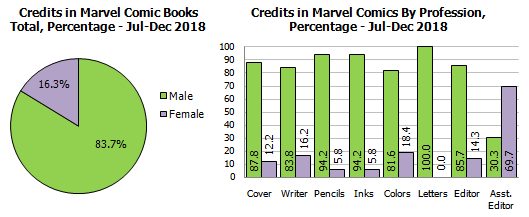
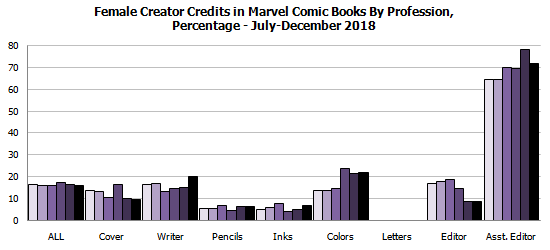
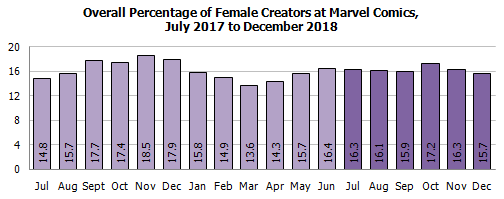

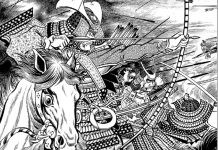
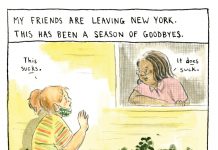




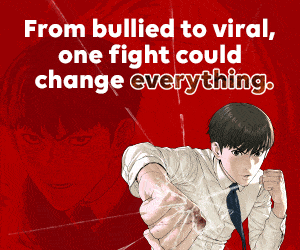

Thanks for the stats, Tim! I hope these numbers provide some accountability to the Big Two when you tabulate them. It’s interesting to note that some categories appear to be more diverse than others. I’d imagine it’s easier for corporate to hire more women in editorial, but the public facing aspect of both companies (art and writing) have a hard time either recruiting female talent or convincing readers to support them. I can understand that certain sensibilities appeal to the typical male audience and thus more male art and writing talent, but I hope that the proliferation of comic/geek media is working to create a more diverse readership and future creative talent pool.
The 18-month graphics look like random drift. Is there any pattern visible in the 8-year dataset?
Comments are closed.